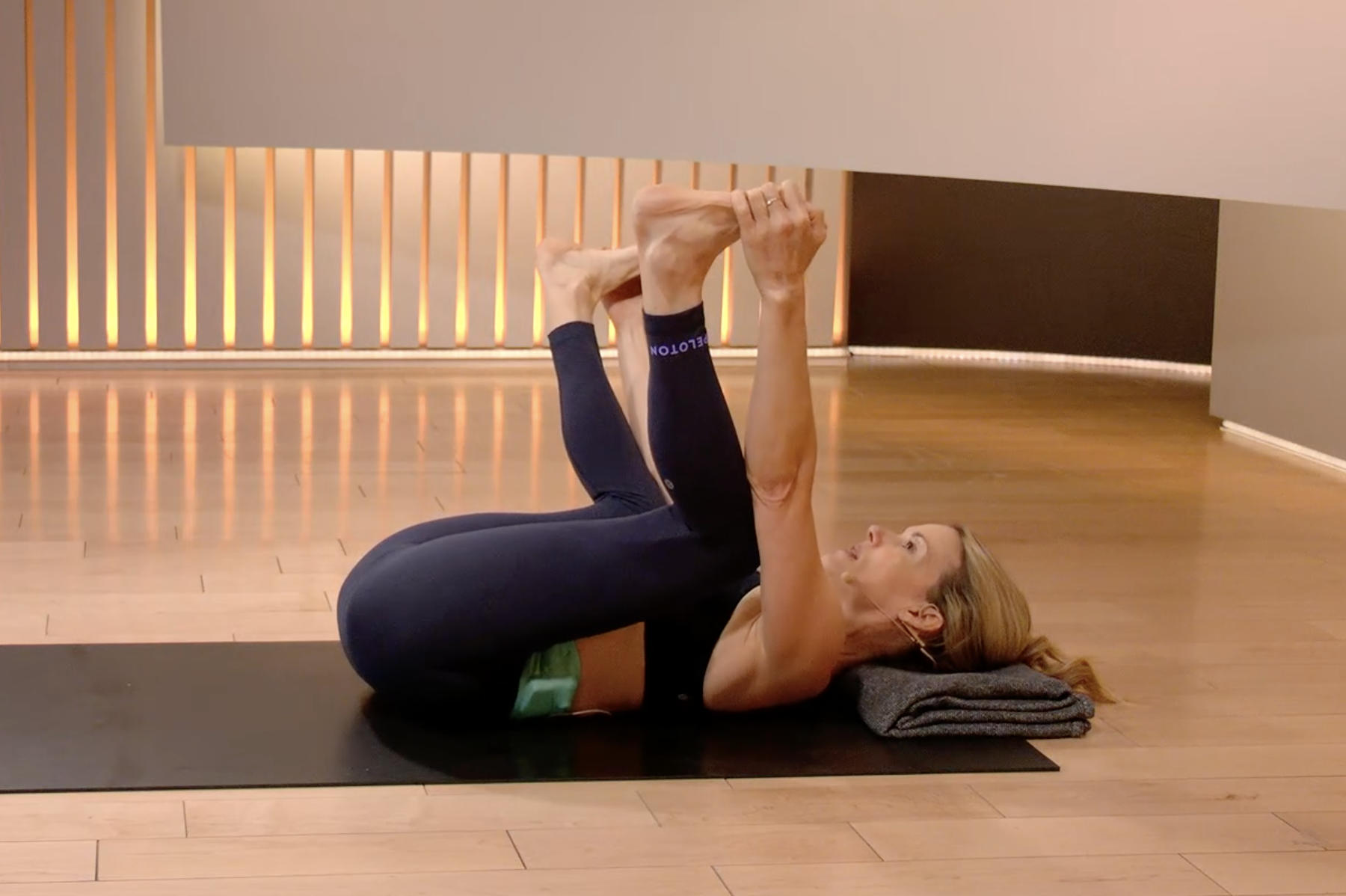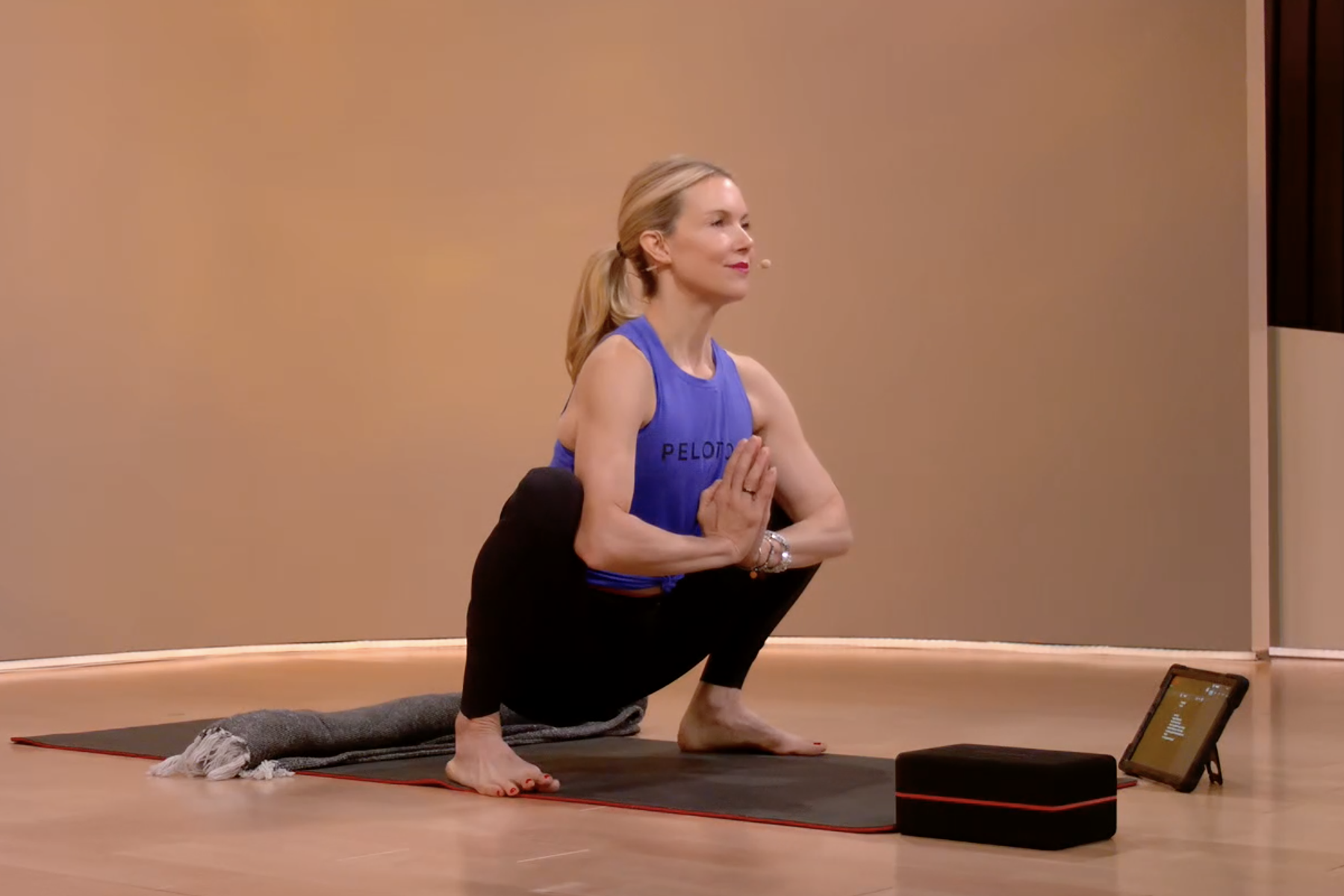
fizkes/iStock/Getty Images Plus via Getty Images
Tried Kegels? Here’s Why You May Also Need to Stretch Your Pelvic Floor Muscles
Here’s what a tight pelvic floor actually is and how to stretch it out, according to experts.
By Leigh Weingus•
What Is the Pelvic Floor?
How to Tell If You Have Tight or Tense Pelvic Floor Muscles
Who Should Stretch Their Pelvic Floor Muscles?
5 Stretches to Help Release Your Pelvic Floor
How to Add Pelvic Floor Stretches to Your Routine
FAQs
When we think about our pelvic floor, we often think about strengthening it (Kegels, anyone)? But, for some women, the issue isn’t isn’t lack of strength, but tightness. If that’s the case for you, you may benefit from relaxing your pelvic floor, which can be done by incorporating pelvic floor stretches into your routine.
But what is the pelvic floor, exactly, and what are some signs that you may benefit from stretching it out? Here’s everything you need to know, including the best pelvic floor stretches to try.
What Is the Pelvic Floor?
The pelvic floor is a group of muscles at the very base of the pubic bone, according to Peloton instructor Kristin McGee. Both men and women have a pelvic floor, but women are significantly more likely to experience pelvic floor issues.
“I think of the pelvic floor like a hammock that supports our entire trunk,” Kristin explains. “It’s at the very bottom half of our pelvis, and it helps support all of our organs from the bottom up.”
Carly Gossard, a physical therapist and founder of Empowered Pelvic Health, adds that the pelvic floor serves a variety of important purposes when it comes to supporting our bodies. “The pelvic floor is responsible for sphincter control, supporting our organs, stability, and sexual function,” she says. “Just like any other muscles in the body, these muscles can have trigger points, weakness, and coordination deficits.”
How to Tell If You Have Tight or Tense Pelvic Floor Muscles
You know what the pelvic floor is, but how can you tell if yours is tight? According to Gossard, the most common symptoms of a tight pelvic floor are pelvic pain, urinary urge or frequency, and constipation. “Clenching your jaw or neck muscles is highly correlated to holding tension in your pelvic floor, so stress management is a huge part of our intake,” she says. “If a patient is coming in with these symptoms I have a pretty good idea of what is going on before I even complete the assessment.”
Kristin adds that pain with intercourse can also be a sign of a tight pelvic floor, as can leakage. “People often associate leakage with having a weak pelvic floor, but it can also happen when people have an overly tight pelvic floor,” she says. “Feeling pressure or having a hard time relaxing or releasing the pelvic floor can also be signs.”
Who Should Stretch Their Pelvic Floor Muscles?
According to Gossard, just about anyone can benefit from stretching their pelvic floor muscles. “I believe almost everyone should focus on pelvic floor mobility,” she says. “Muscles that are tight cannot be strong or function appropriately. These muscles carry a lot of stress and also try to compensate for poor ankle stability, glute strength and weak abdominal muscles.”
However, Gossard says, people with connective tissue disorders such as Ehler’s-Danlos should avoid mobility exercises like pelvic floor stretches unless they’re working with an expert who can give specific instructions for how to do these exercises safely.
Kristin echoes this, saying that while pelvic floor stretches are geared toward people with a tight pelvic floor, a tight muscle can also be a weak muscle. “You want to make sure your pelvic floor has tone, but you also want to release so you don’t overly Kegel and only make your muscles tight,” she explains. “Having flexibility is always beneficial.”
If you're unsure if pelvic floor stretches are right for you, or are experiencing pain that you suspect is related to your pelvic floor, you should speak to your doctor or a physical therapist who can help evaluate your needs.
5 Stretches to Help Release Your Pelvic Floor
Stretching your pelvic floor is a lot easier than you might think. If you regularly practice yoga, you might already be doing pelvic floor stretches. With that in mind, here are the best stretches for your pelvic floor.

According to Kristin, Child’s Pose is great for stretching the pelvic floor. “A lot of times when we think of our pelvic floor we just think of the front side. We’re not just trying to strengthen one side or end, you want to get that tone and tension and relaxation on both sides,” she says.
1. Start on your hands and knees, and open your knees wide.
2. Sit your hips back, resting on your heels (or as close to your heels as you can).
3. Stretch your hands out in front of you with your palms facing down. You can rest your forehead on the mat, and your belly can rest between your legs.

Happy Baby
Happy Baby pose is a great pelvic floor stretch to do on your back, according to Kristin. “If that’s too much you can always do half happy baby on one side,” she says.
1. Lie on your back and extend your legs up toward the ceiling.
2. Grab both feet or ankles, spread your legs as much as you comfortably can.
3. Hold or rock back and forth gently.
For half Happy Baby, you can just grab one foot instead of both.

Squat Pose
Squat pose, or Malasana as it’s known in yoga, can help strengthen and stretch the pelvic floor.
1. Firmly plant your feet on the floor in a standing position, turn your toes out to a 45-degree angle.
2. Slowly lower yourself until you’re just hovering above the ground. If this is difficult to achieve, try bringing your feet as wide apart as possible, tucking a blanket underneath your heels, or sitting up on a block.
3. Press your elbows into the inside of your knees. Hold for 30-60 seconds.

Pigeon pose is excellent for stretching the hips, but it will also help you stretch out your pelvic floor.
1. Start in a downward-facing dog and bring one shin out in front of you parallel (or as parallel as possible) to the front of your yoga or workout mat.
2. Start sitting upright, keeping your hip bones parallel to each other and facing forward. And then if it’s comfortable, slowly inch your hands forward and allow your forehead to rest on the mat or a block.
3. Hold and then switch sides.
Diaphragmatic Breathing
We may not think of diaphragmatic breathing as a pelvic floor stretch, but Gossard says it can be a great way to release the pelvic floor. Diaphragmatic breathing can be done sitting upright or lying down and involves focusing on and using your diaphragm (the shelf of muscles that separates the chest from the abdomen) to breathe in and out. In addition to stretching your pelvic floor, diaphragmatic breathing can help improve lung efficiency.
How to Add Pelvic Floor Stretches to Your Routine
If you believe pelvic floor stretches could be beneficial for you, Gossard says they can be done one to two times per day. “I always tell my patients to work smarter, not harder, and find a way to incorporate your stretches into your daily routine,” she says. “For example, I like to do pelvic floor stretches in bed in the morning and before going to sleep at night.”
You can also easily tack pelvic floor stretches onto your regular workouts, according to Kristin. “Add an extra five minutes at the end of each workout to make sure you’re incorporating that into the workout,” she says. “Or make it a daily routine like brushing your teeth and time it with another habit you’re used to doing. Every night when you’re doing a face mask or putting eye patches on in the morning, do your pelvic floor stretches too.”
If you already have a lengthy stretching or recovery routine, you may not be super excited to add pelvic floor stretches. But a little bit of pelvic floor stretching can go a long way, so it’s totally worth it.
FAQs
How do you loosen tight pelvic floor muscles?
Stretches like Child’s Pose, Happy Baby, Pigeon Pose, Squat Pose, and diaphragmatic breathing can all help with loosening tight pelvic floor muscles.
What are the symptoms of a tight pelvic floor?
Symptoms of a tight pelvic floor can include pain or pressure in your pelvis, pain with intercourse, leakage, or feeling the urge to urinate frequently.
Is walking good for a tight pelvic floor?
Yes, and Gossard says she often prescribes walking or hiking to people who are dealing with a tight pelvic floor. “If you notice pelvic pain or leakage with walking, however, seek out a pelvic floor therapist for an individualized assessment and treatment plan,” she says.

Peloton App
Access thousands of classes with no equipment needed.
This content is for informational and educational purposes only and does not constitute individualized advice. It is not intended to replace professional medical evaluation, diagnosis, or treatment. Seek the advice of your physician for questions you may have regarding your health or a medical condition. If you are having a medical emergency, call your physician or 911 immediately.
This content is for informational and educational purposes only and does not constitute individualized advice. It is not intended to replace professional medical evaluation, diagnosis, or treatment. Seek the advice of your physician for questions you may have regarding your health or a medical condition. If you are having a medical emergency, call your physician or 911 immediately.
Level up your inbox.
Subscribe for a weekly dose of fitness, plus the latest promos, launches, and events.
By providing your email address, you agree to receive marketing communications from Peloton.
For more about how we use your information, see our Privacy Policy.



